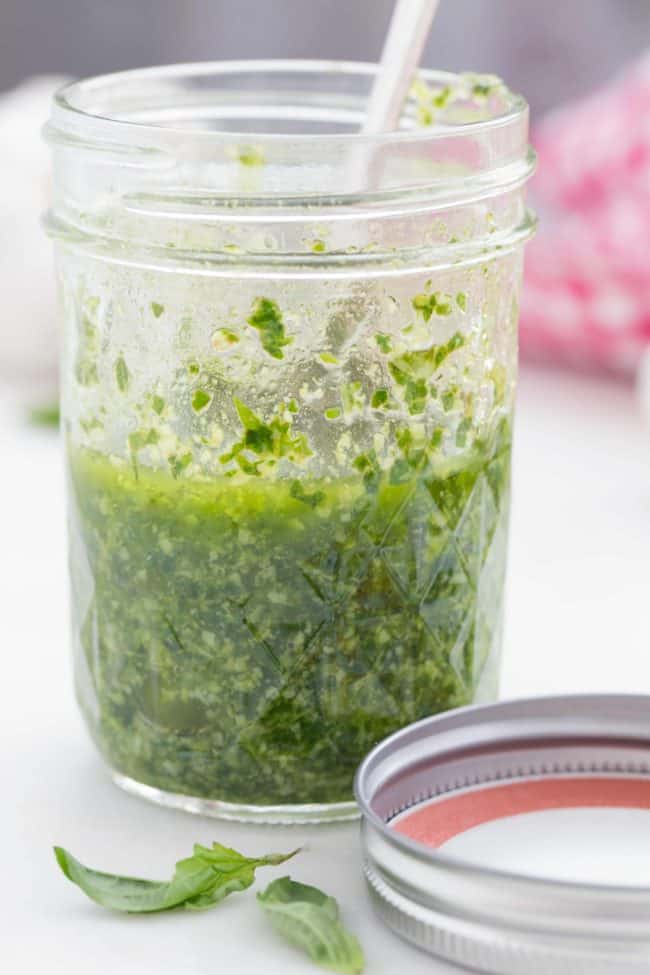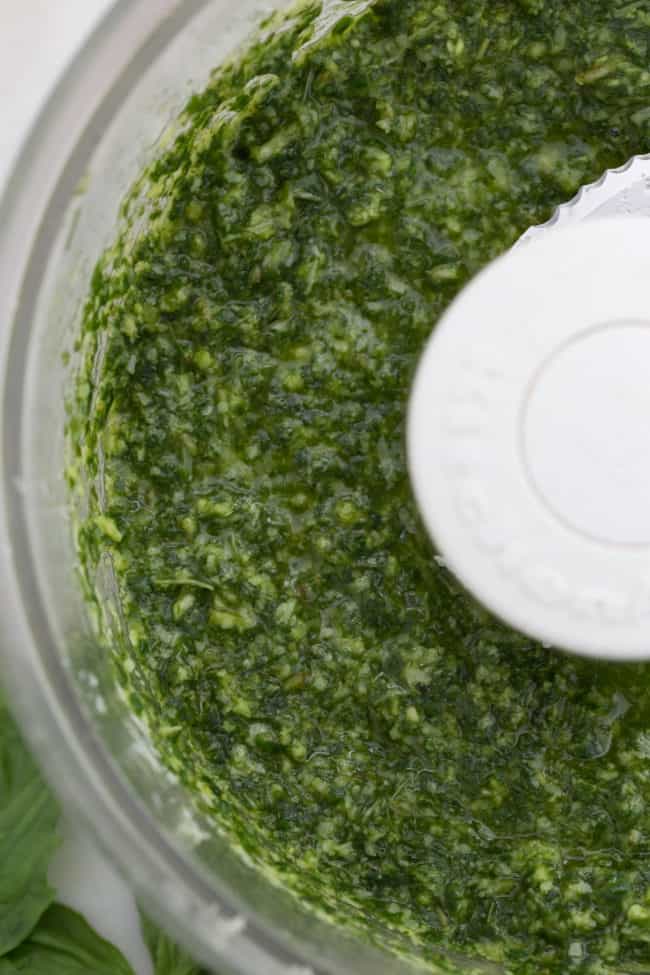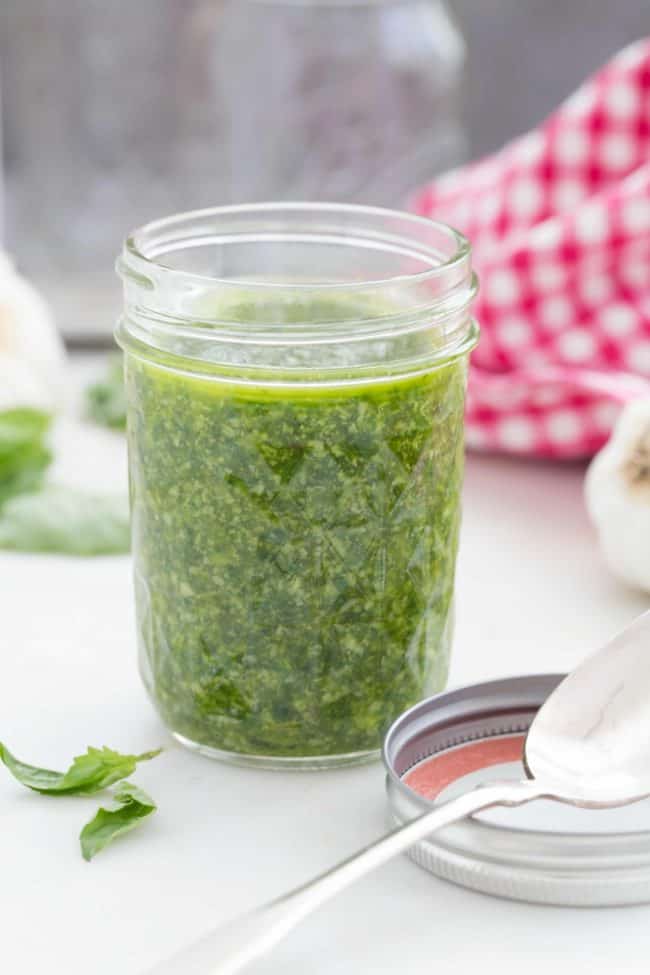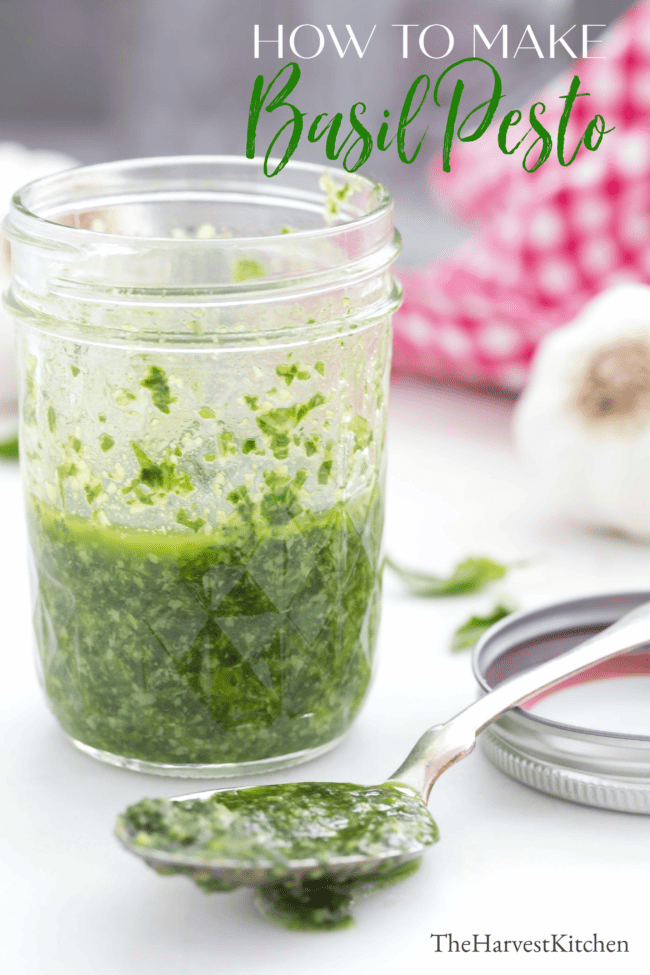How to Make Basil Pesto
Learn How to Make Basil Pesto with this quick and easy homemade pesto recipe. Fresh basil pesto is great to swirl into your favorite soups, spread on sandwiches and add to stews, pasta dishes and more.
This homemade pesto sauce is healthy, delicious and made with fresh basil, garlic, pine nuts, Parmesan cheese and extra-virgin olive oil.
What Is Basil Pesto?
Basil pesto sauce is a delicious green sauce that can be spread on sandwiches, stirred into soups and stews, tossed with vegetables and added to salad dressings. It’s also amazing drizzled on eggs (fried or scrambled).
What’s The Difference Between Pesto And Pistou?
What’s the difference between pesto and pistou? Pesto originated in Italy, and pistou (also a garlicky basil sauce) originated from the south of France. Pistou looks like pesto, but the main difference between the two is that there are no pine nuts added when making pistou.
Homemade Pesto Recipe
This homemade pesto recipe uses fresh basil, garlic, olive oil and Parmesan cheese. A lot of recipes call for Parmigiano-Reggiano, but I use Parmesan because I personally like the flavor of it better. If you don’t want the expense of adding pine nuts (they can be expensive), then try adding walnuts, pistachios or almonds, or omit nuts altogether.
- Fresh basil leaves
- Parmesan cheese (or Parmigiano-Reggiano)
- Garlic
- Pine nuts (or almonds, walnuts, cashews or pistachios) (optional)
- Olive oil
Find printable recipe with the measurements below.
How To Make Basil Pesto
- Toast Nuts. Heat a frying pan over medium low heat. Toast the pine nuts until lightly golden shaking the pan frequently to prevent burning.
- Mince Garlic. Peel and mince 2 cloves garlic. My son loves it good and garlicky so he adds 3 cloves to the mix.
- Grate Cheese. Finely grate the cheese. I use a fine grater typically used for Parmesan cheese, rather than a box grater, so there are no larger pieces of cheese in the sauce.
- Prep Basil. Remove the thick ends of the stems and discard using only the leaves and finer stems. Add the basil, garlic and nuts to a food processor (or blender if you don’t have a processor) and process until finely chopped.
- Add Olive Oil and Cheese. While processor is still running, pour olive oil in a stead stream through the feed tube. Turn the processor off and remove the lid to add your cheese. Pulse a few times to incorporate the cheese into the sauce.
How Long Does Homemade Pesto Last?
Transfer homemade pesto to an airtight container or mason jar. Drizzle about 1-1/2 teaspoons of olive oil on the top to prevent it from browning. Store in the refrigerator for up to one week.
Can You Freeze Pesto?
To freeze pesto, just spoon into an ice cube tray and freeze. Transfer the frozen cubes into an airtight container of freezer bag.
How Do You Keep Basil Fresh?
Trim the stems and place them in a glass of water (like flowers) and leave them either on the counter or refrigerator.
How Do You Store Fresh Basil?
There’s three methods for storing fresh basil.
- Trim the stems and place the basil in a glass of water with a plastic bag covering the leaves. Store either on the countertop or the refrigerator if you have the space.
- Pick the basil leaves off the stems and lay them flat on a paper towel. Roll the paper towel up and put in a plastic bag and store in the refrigerator.
- Pick the basil leaves off the stems and place in a freezer storage bag and lay flat in the freezer until the leaves are frozen. You can also quickly blanch the leaves and then bunch them up in ice cube tray compartments and freeze them into cubes.
Serving Suggestions
Homemade basil pesto can be spread on sandwiches, stirred into soups, sauces and stews, tossed with vegetables, noodles, drizzled over eggs (fried or scrambled) and added to salad dressings.
Recipes With Basil Pesto
- Basil Pesto Croutons
- Pesto Eggs Avocado Toast
- Soup au Pistou
- French Potage with Pistou
- Basil Mashed Potatoes
- Lemon Basil Vinaigrette
- Pesto Cauliflower Rice
- Basil Pesto Broccoli
- Arugula Pesto Potato Salad
More Pesto Recipes
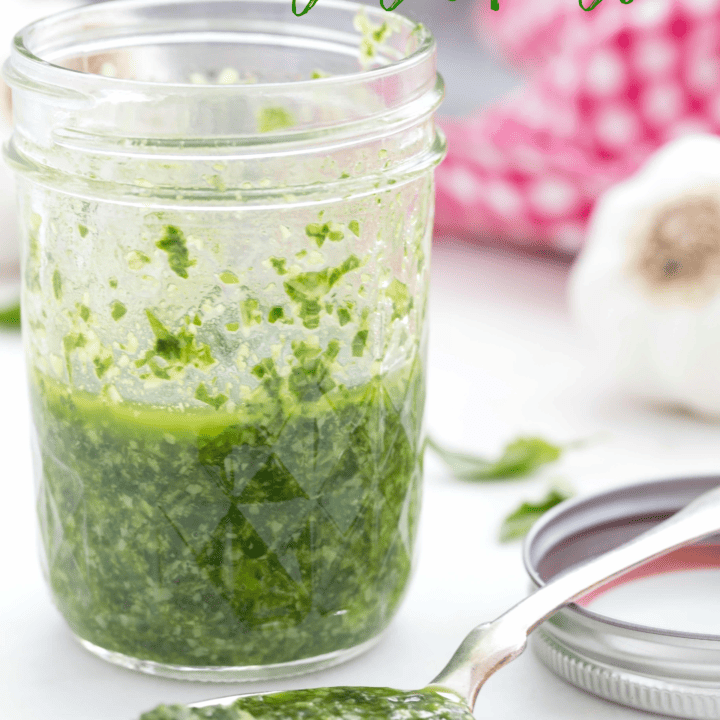
How to Make Basil Pesto
Learn How to Make Basil Pesto with this quick and easy homemade pesto recipe. Fresh basil pesto is great to swirl into your favorite soups, spread on sandwiches and add to stews, pasta dishes and more.
Ingredients
- 2 cups packed fresh basil leaves
- 1/2 cup freshly grated Parmesan cheese (or Parmigiano-Reggiano)
- 2 cloves garlic, minced
- 2-3 tablespoons pine nuts (or almonds, walnuts, cashews or pistachios) (optional)
- 1/4 teaspoon cracked pepper
- 2/3 to 1/2 cup extra-virgin olive oil (depending on your desired consistency - use 1/2 cup for a thinner consistency)
Instructions
- Combine the basil leaves, garlic and pine nuts in a blender or food processor fitted with the metal blade and pulse until the leaves are minced finely.
- Add the olive oil and pulse to blend, stopping to scrape down the sides of the bowl.
- Turn processor off and remove the lid to add the cheese. Secure the lid and pulse to incorporate the cheese into the pesto.
Notes
How To Store Pesto
Store pesto in a sealed jar. Drizzle about 1-1/2 teaspoons of olive oil on the top to prevent the pesto from browning. Pesto can keep in the refrigerator for up to a week.
Nutrition Information:
Yield:
6Serving Size:
1Amount Per Serving: Calories: 174Total Fat: 17gSaturated Fat: 3gTrans Fat: 0gUnsaturated Fat: 13gCholesterol: 7mgSodium: 151mgCarbohydrates: 2gFiber: 0gSugar: 0gProtein: 3g
theharvestkitchen.com attempts to provide accurate information, however, this nutritional information is provided as a courtesy and is an estimate only. The nutritional information provided comes from online sources and calculations. See full disclaimer on About page.
